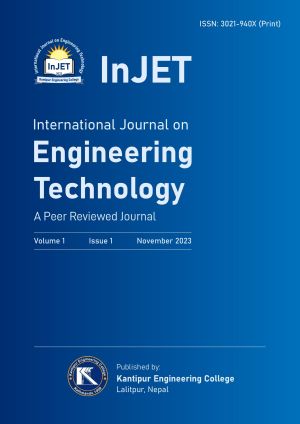Passengers Flow Analysis of Public Transit Service in Pokhara
DOI:
https://doi.org/10.3126/injet.v1i1.60942Keywords:
Public transportation, Capacity, Loading area, Service FrequencyAbstract
The motive of the study is to evaluate the existing public transportation system and propose recommendations for Pokhara public transportation to enhance its efficiency and effectiveness. In urban locations, a well-managed public transportation system is unquestionably required. According to the previous study, passengers faced various issues on their journey, such as delays in reaching their destination, bus congestion, an inappropriate time of departure, lane stoppage, and more. (Duwadi, et al., 2019) The primary and secondary data collected from fieldwork and the Yatayat Bibhag, respectively, were used in the research for the analysis. The volumes of passenger flows on ten different routes were analyzed. Mapping and modeling were done using GIS and CAD. Results show that the service frequency did not match the actual swings in consumer demand, resulting in increased time delays. It is recommended that well-managed loading areas be needed in areas with the highest person capacity of more than 3000 per stop per hour, such as Chipledhunga, Mahendrapool, Srijanachowk, and more. A practical operation schedule and service frequency, including 10% for backup and maintenance, were recommended. Demand for passengers on various routes and the number of years the capacity can fulfill the demand is calculated.
Downloads
Downloads
Published
How to Cite
Issue
Section
License
This license enables reusers to distribute, remix, adapt, and build upon the material in any medium or format, so long as attribution is given to the creator. The license allows for commercial use.




